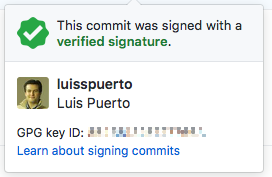

- #Failed to verify signature for macports source install
- #Failed to verify signature for macports source software
- #Failed to verify signature for macports source code
- #Failed to verify signature for macports source download
So I installed with Homebrew, despite recommending MacPorts. All things being equal, I vastly prefer to avoid MacPorts altogether. However, on my machine this only seems to work if the program is compiled using Apple's GCC, which is no longer supported by Apple. This is probably the best option (thanks to CC's comment for this tip). MacPorts has Apple's official GDB distribution, which is modified for OS X.
#Failed to verify signature for macports source install
You can install via MacPorts or Homebrew. On OS X Yosemite, the MacPorts version will require some extra hoops to jump through. It was also reported in the comments that it cannot breakpoint into a shared library function. This problem may be resolved if you use the MacPorts installation procedure (below) but it may only work if you also compile with Apple's GCC. GDB will not be able to breakpoint inside any template function, though it should be able to step into it.

2 Others have reported issues with this, so please do let me know in the comments if it doesn't work for you. Here is the procedure that worked for me.
#Failed to verify signature for macports source code
So, if you want to debug C/C++ code in Eclipse CDT on the Mac, you must install GDB. LLDB looks to be a very nice replacement for GDB, and I hope to use it in the future, but currently Xcode is the only graphical front-end that supports its use pretty much every other debugging GUI uses GDB under the hood, including Eclipse. This means that Xcode now uses LLDB instead. Since 2005 Apple has steadily been moving away from the GNU toolchain in favor of LLVM. With its new OS release, Apple has discontinued the use of GDB in OS X. You can read more about code signing on Wikipedia and on the Apple Developer guide to code signing here.If you prefer watching videos to reading articles, Cody Henrichsen has created a video walkthrough of this procedure.
#Failed to verify signature for macports source software
Keep in mind that most code signed software that has been modified by an unauthorized party will be rejected by Gatekeeper in OS X, unless Gatekeeper has been disabled or otherwise circumvented, but even with Gatekeeper left on it’s theoretically possible for an enterprising goon to find a way around it, and of course software that hasn’t been certified by a identified developer can always be launched around Gatekeeper anyway. Yes, you can also use the command line to just check sha1 or md5 hashes of application installers and downloads and compare them to a legitimate source, but that won’t reveal the code signing and certificate details. In this case the hash type is sha1 and the signed authority is Apple, which is what you’d expect. What you’re looking for are the hash type, hash, and authority entries. Sealed Resources version=2 rules=13 files=996 We’ll be using the aptly named ‘codesign’ command, complete with the -dv and –verbose=4 flags to show identifying information about any application, including it’s hash type, hash checksum, and signing authority.Ĭode sign -dv -verbose=4 /Path/To/Application.appįor example, let’s check the signature on Terminal.app, located in /Applications/Utilities/Ĭodesign -dv -verbose=4 /Applications/Utilities/Terminal.appĮxecutable=/Applications/Utilities/Terminal.app/Contents/MacOS/TerminalĬodeDirectory v=20100 size=5227 flags=0x0(none) hashes=255+3 location=embeddedĬDHash=0941049019f9fa3499333fb5b52b53735b498aed6cde6a23Īuthority=Apple Code Signing Certification Authority To get started, launch Terminal, found in /Applications/Utilities/. Such a situation is when it would be important to know and verify that the installer has not been tampered with and is legitimately coming from Apple, and aside from checking sha1 hash directly, the easiest way to do that is to check the code signature and cryptographic hash of the app in question.
#Failed to verify signature for macports source download
For a practical example, let’s say a user can’t access the Mac App Store for whatever reason, but needs to download an OS X installer application and thus relies on a third party source. Verifying a code signature is particularly important for those getting software and installers from p2p and distributed sources, perhaps a torrent site or newsgroups, IRC, public ftp, or another network resource.


 0 kommentar(er)
0 kommentar(er)
